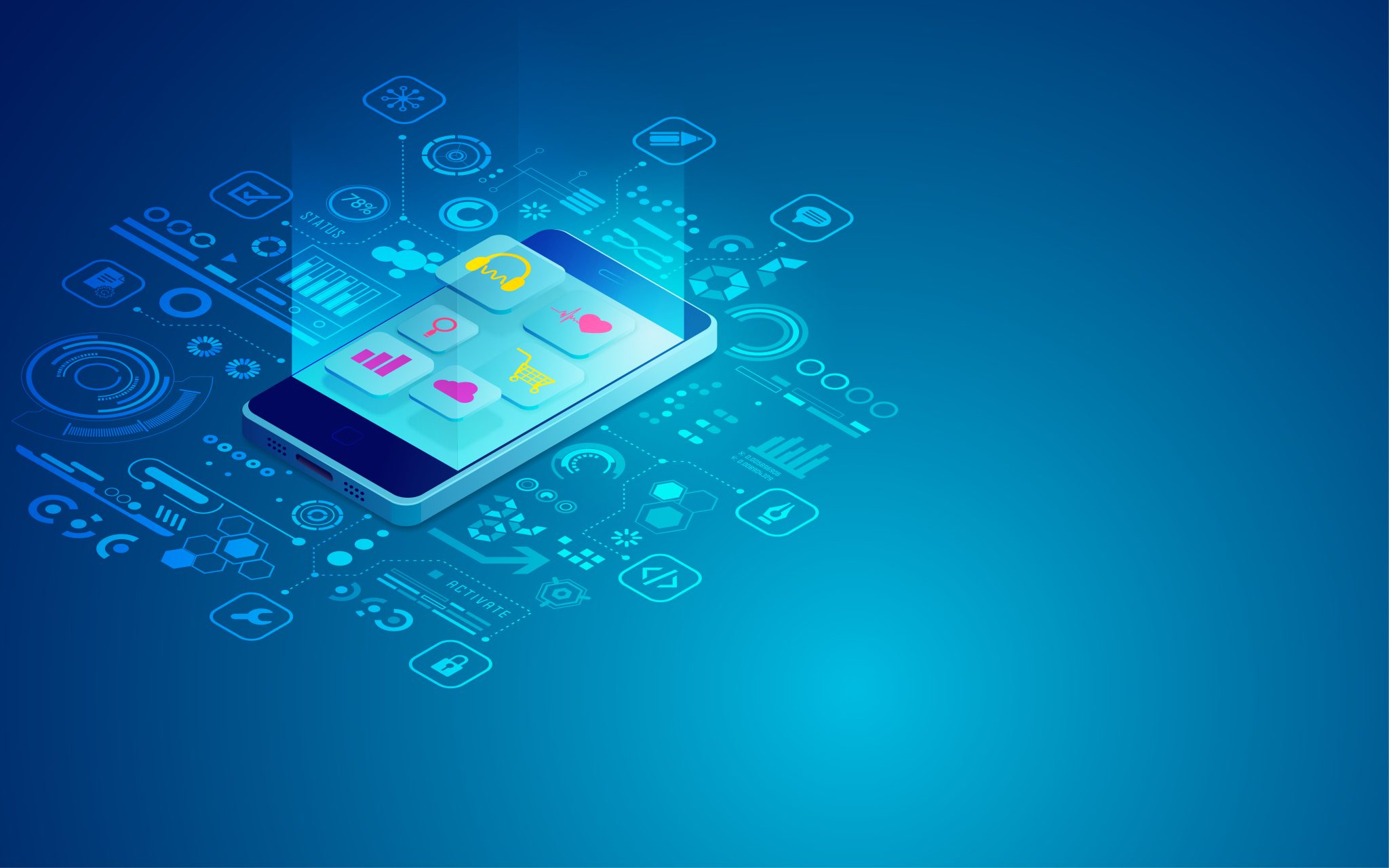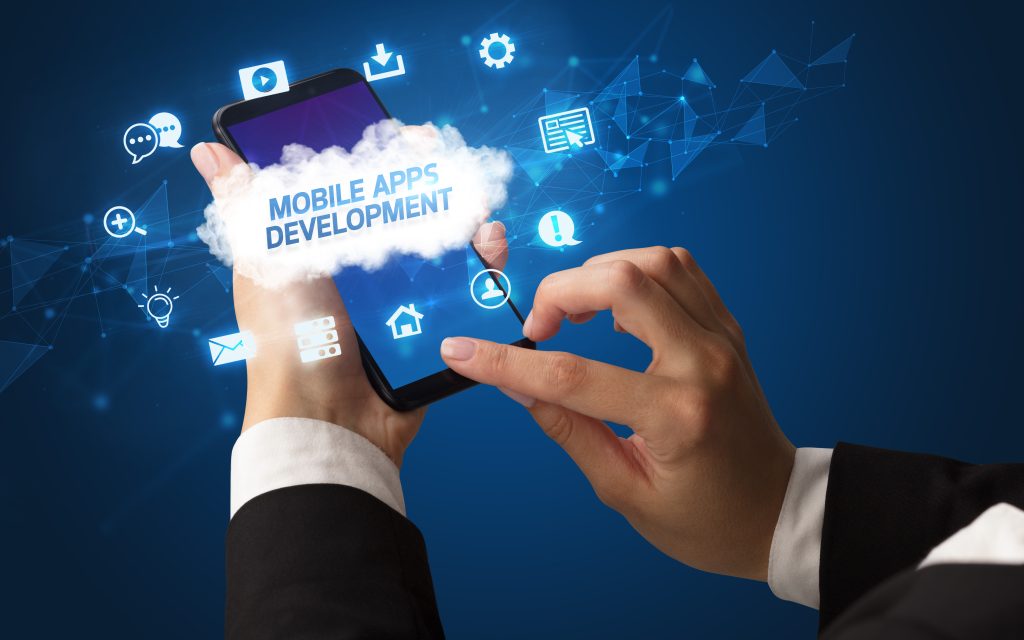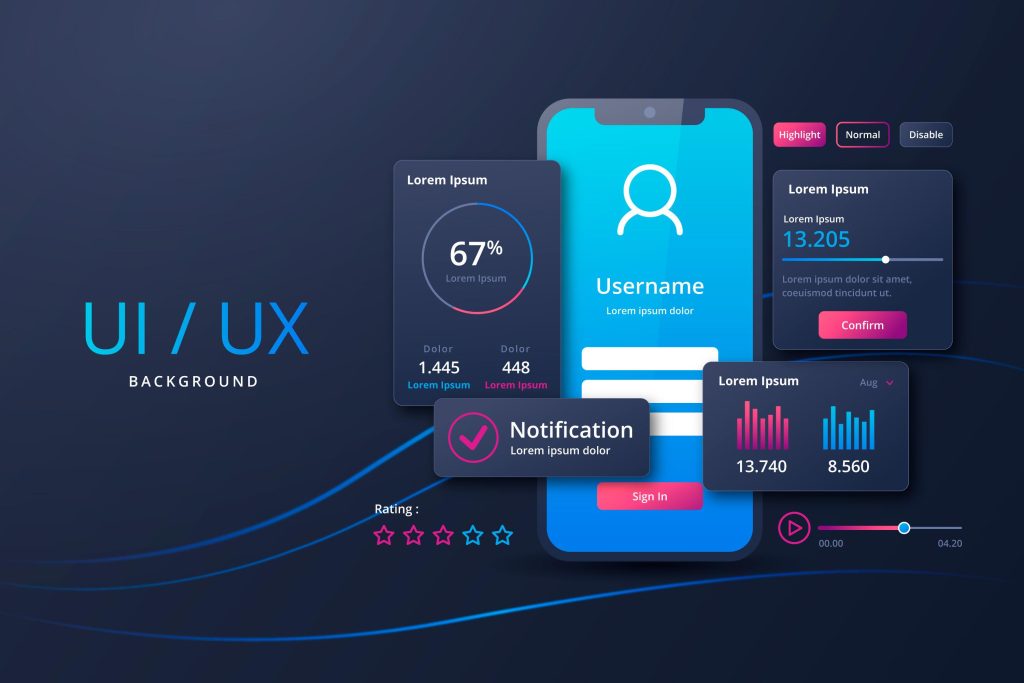
Back in 2012, mobile apps were simple – clean UI, limited features, and fingers crossed they didn’t crash.
Fast forward to today, and expectations have changed.
Users now want smarter, faster, more intuitive experiences.
Not just quicker load times, but apps that understand their needs and blend seamlessly into their daily routines.
Mobile app development trends evolve faster than most teams can keep up. Trends don’t shift – they sprint. Still debating native vs. hybrid? You’re already behind.
Some mobile application trends are loud, like spatial computing in everyday apps. Others, like offline-first design, quietly reshape user expectations.
Founders, developers, marketers – it’s time to stop building for versions and start building for habits. Because that’s the new baseline.
Call us now!
Boost your digital presence with our expert.
Top Mobile Application Development Trends

Apps aren’t just apps anymore – they’re borderline overachievers. With users swiping through life faster than your grandma on WhatsApp, developers are under pressure to keep it zippy, bright, and… well, worth the thumb workout.
App trends are leveling up – mixing AI, AR, and super-fast performance to create next-gen everyday experiences.
Mobile app technology is evolving fast, ushering in smarter features, immersive experiences, and real-time responsiveness into the apps we use every day.
As mobile application development trends keep shifting, developers are expected to create apps that aren’t just quick but built to last in a changing digital world.
In 2025, the mobile app industry is projected to generate $437.75 billion in revenue, with an annual growth rate of 7.48%, reaching $781.70 billion by 2029.
This surge is driven by increasing consumer engagement, as evidenced by the average global consumer spending of $5.05 per smartphone in Q3 2023. Here’s what’s keeping coders up at night (and making your screen smarter).
Mobile App Development Advancements
Mobile tech has grown up fast. Apps aren’t just smoother – they’re smarter, faster, and more plugged into real-time data than ever. With 5G reducing lag to nearly nothing, users expect instant everything. AI isn’t a buzzword anymore.
It’s the engine behind smarter search, voice, and personalization. These app trends are shaping how users interact with technology on a daily basis. And as mobile app technology trends continue to evolve, the pressure on developers to deliver intuitive, powerful experiences has never been greater.
AR is no longer a party trick! It’s changing how people shop, learn, and play. Cloud and edge computing mean users get seamless performance, even on the go. App development today isn’t about cramming in features – it’s about making every tap count.
Internet of Things (IoT) App Integration

Refrigerators now text you. Lights follow your mood. IoT is that clingy friend who wants in on every app party. Apps are syncing with devices faster than your dog figures out you’re headed to the vet. Expect smoother syncing, hyper-personalization, and a surge in predictive behaviors.
Fitness apps will talk to your fridge. Your car might preheat your shower. Developers are now the glue that holds this wild digital mesh together.
5G Technology
No more “buffering… please wait.” 5G is doing to speed what coffee does to writers- injecting serious fuel. This means real-time gaming, zero-lag video calls, and AR/VR that doesn’t glitch like it’s on dial-up. It’s not just about speed- it’s about bandwidth and capacity. Picture more devices, connected seamlessly, delivering more immersive, stable, and low-latency experiences, all while sipping less battery juice.
Augmented Reality (AR)
AR isn’t just for catching digital monsters anymore. It’s one of the standout app trends, giving apps an extra dimension-literally. How about furniture previews in your living room, makeup tests without smudging your face, and interactive manuals that teach you to assemble a table without arguing with your spouse?
Expect AR to become essential in retail, learning, and productivity.
Virtual Reality (VR)

Put on a headset and poof-you’re in another world. VR apps are going full Matrix. Beyond gaming, we’re talking meetings, classes, and even social hangouts where pants are optional (because it’s virtual, relax).
It’s also entering training and healthcare apps helping surgeons simulate procedures or teachers guide students through ancient ruins. Exactly, that’s why businesses need to know how to get started with virtual reality.
Extended Reality (XR)
AR + VR + mixed reality = XR. Fancy acronym, but it just means your apps are about to become more immersive than your favorite drama series.
As one of the most exciting app trends, XR is powering retail apps with virtual showrooms and tourism apps that let users walk through historical sites from their couch. It’s quietly slipping into sectors like education, remote collaboration, and real estate.
Edge Computing in Mobile Apps
Edge computing moves data processing closer to the user. That means less lag and better performance, especially for real-time stuff like gaming, health tracking, or smart factory tools. It’s one of those mobile app development trends that’s quietly changing the game. Apps built this way respond faster and still work well even when the network doesn’t.
Super Apps Are Going Mainstream
Why open five apps when one can do it all? Super apps are becoming hubs for chat, shopping, banking, booking, and more.
They are like digital malls where you can do almost anything. In 2025, expect more developers and companies bundling features to keep users engaged inside a single ecosystem.
Mobile Commerce (M-Commerce) Trends
Shopping from your phone is old news, but what’s new is how intelligent it’s becoming. With better payment gateways, AR try-ons, AI-driven recommendations, and voice-assisted checkout, mobile commerce apps are turning window shoppers into one-click loyalists.
Sustainability in App Development
Green is the new black, even in tech. Developers are focusing on optimizing code, reducing energy usage, and extending battery life. Plus, sustainable practices in app development are helping companies appeal to environmentally conscious users and meet stricter regulations.
Beacon Technology
Tiny devices, big moves. Beacons whisper to your phone when you’re nearby, nudging you into stores with personalised offers.
Creepy or cool? You decide.
But app developers are loving the micro-location superpowers. Expect museums, events, retail chains, and airports to get even smarter, pushing content, directions, or deals just when you need them.
Artificial Intelligence (AI)
No, your app won’t take over the world. But it will start learning how you scroll, shop, and snooze.
Smart suggestions, better automation, and maybe even a chatbot that doesn’t sound like a cardboard box.
As app trends evolve, expect AI-powered language translation, fraud detection, and content moderation to go from ‘meh’ to magical.
Machine Learning (ML)
ML is AI’s brainy sibling that keeps improving the more you use it. From personalized recommendations to fraud detection, it’s like having a brainy intern that never sleeps. Expect smarter push notifications, predictive keyboards, and apps that know what you want before you even open them.
Cloud Computing Integration
Gone are the days of bloated apps eating up your storage. Cloud’s taking over, letting apps be sleek on the outside, mighty on the inside.
This shift allows users to access features, data, and even games without downloading 2GB of fluff.
Bonus?
Updates happen in real-time, and offline access is now a standard.
Blockchain Technology
Blockchain is making mobile apps more secure, transparent, and tamper-proof. Think medical apps, payments, and even voting platforms that won’t flake. Plus, smart contracts are being integrated into apps, making digital agreements smoother.
Call us now!
Boost your digital presence with our expert.
Device Adaptation
Screens are shapeshifting. Phones are folding, watches are talking, and developers? They’re stretching, squashing, and rethinking their designs like never before.
Apps for Foldable Devices
Flip phones rebranded and came back cooler. Apps now need to flow seamlessly across folded, flipped, and flexed screens. It’s like coding for a shape-shifting Transformer. Developers are optimising content layout, multitasking support, and handling unique screen ratios-no one wants their video cut in half, right?
Development for Wearable Devices
Tiny screens, big possibilities. From counting steps to reading texts without pulling out your phone, wearables are getting smarter and sneakier. Developers now design micro-experiences that do a lot with less contextual notifications, voice replies, and fitness insights that feel like a nudge from a coach on your wrist
User Experience (UX) & Interface (UI)

A great app must be effortless, intuitive, and easy on the eyes. But 2025’s UX game? It’s upping the charm in every possible way.
Motion Design
Static screens are so 2010. Apps are moving, swiping, sliding, bouncing. Micro-animations now do the talking, guiding users like a friendly ghost with a flair for drama. It’s about feedback loops, transition elegance, and making those few seconds of loading feel oddly satisfying.
Smart and Inclusive UX Designs
Design is finally catching up with you know, everyone. Expect apps to be more inclusive, thinking of colorblind users, screen readers, left-handed folks, and everything in between. And don’t forget localisation-designs now speak your language, your culture, and your slang.
Touchless UI
Thanks to pandemics and plain old laziness, users are touching less and expecting more. Gesture controls and facial recognition are letting people wave, nod, and blink their way through apps. In places where hygiene or accessibility matters, this is less of a fancy feature and more of a necessity.
Voice Recognition
Talking to your phone isn’t weird anymore. It’s productive. Voice-activated features are now better listeners than your ex. They understand accents, context, and even sarcasm (kinda). Developers are integrating conversational AI that can schedule meetings, book cabs, or read your emails without fumbling.
Camera-Focused Apps
The camera’s not just for selfies anymore. It’s the app’s eyes—scanning QR codes, measuring dimensions, and translating menus on vacation so you don’t end up eating mystery meat. In 2025, apps are using cameras to diagnose skin issues, try out clothes virtually, and track inventory in warehouses.
Call us now!
Boost your digital presence with our expert.
Conclusion:
Mobile app development in 2025 isn’t just about devices- it’s about user behavior. From AR and XR to 5G and edge computing, app trends are making apps faster, smarter, and more intuitive.
Today’s mobile application development services in India go beyond features, such as super apps, AI-driven personalisation, and seamless cross-device experiences. Developers are now crafting habits, not just code. As screens fold and wearables evolve, the goal is to build fluid, future-ready apps.
For brands ready to ride this next wave, AppAspect -the best custom mobile app development company in Ahmedabad – offers innovation, agility, and vision to fuel your app journey.

Gurupritsingh Saini is an entrepreneur and the one who leads his team at AppAspect Technologies Private Limited. He has vast knowledge of mobile application development. AppAspect helps businesses by providing website and mobile app development services.







